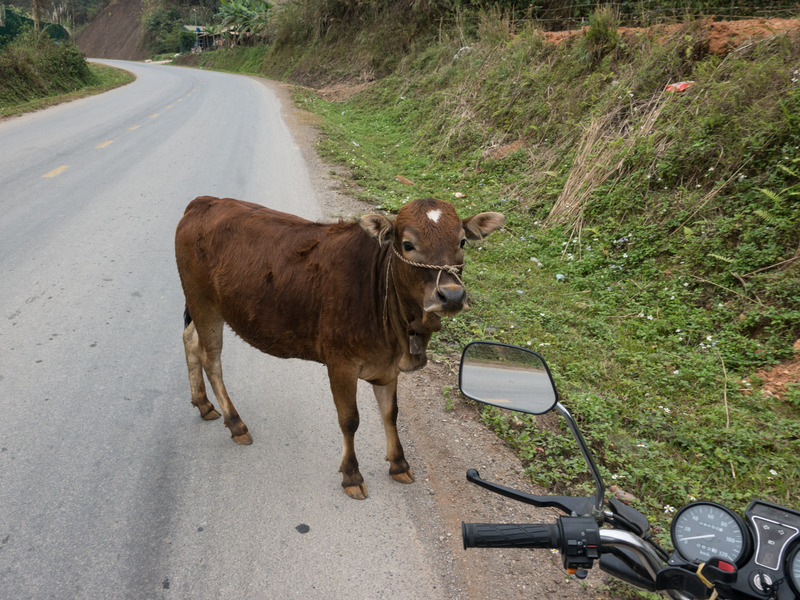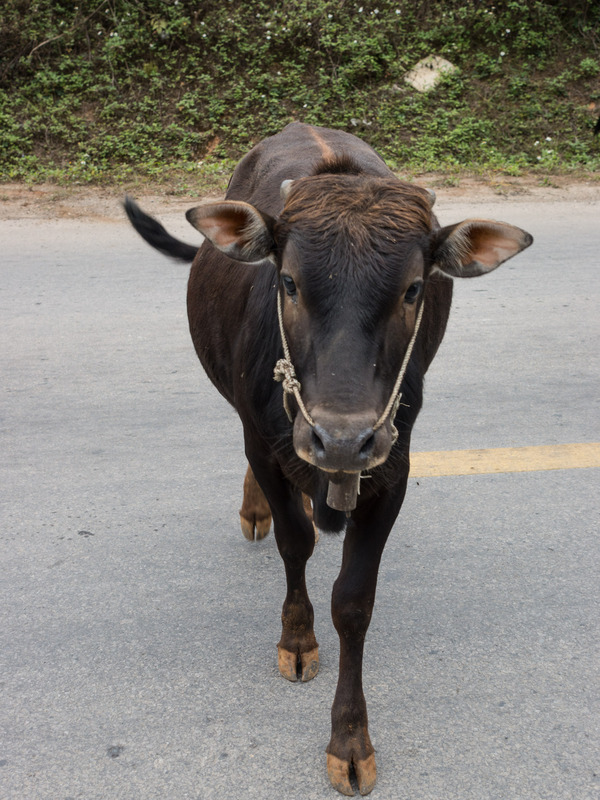Hà Giang, Vietnam's Northernmost Province
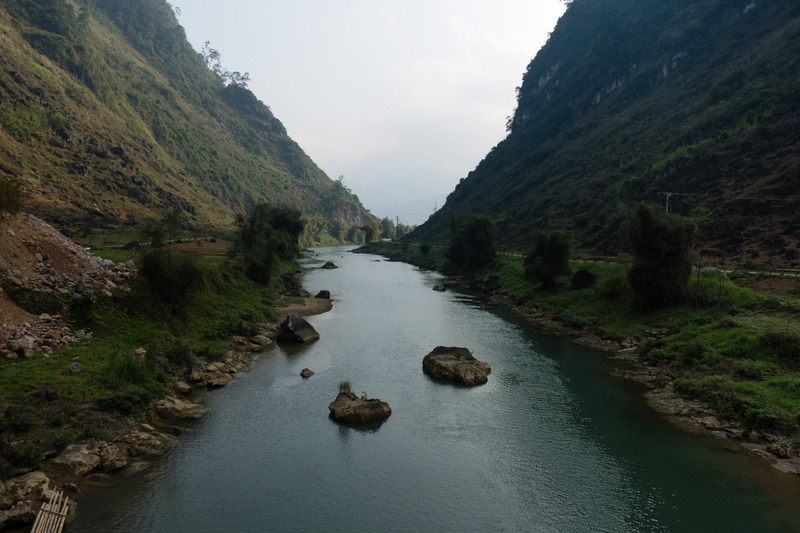
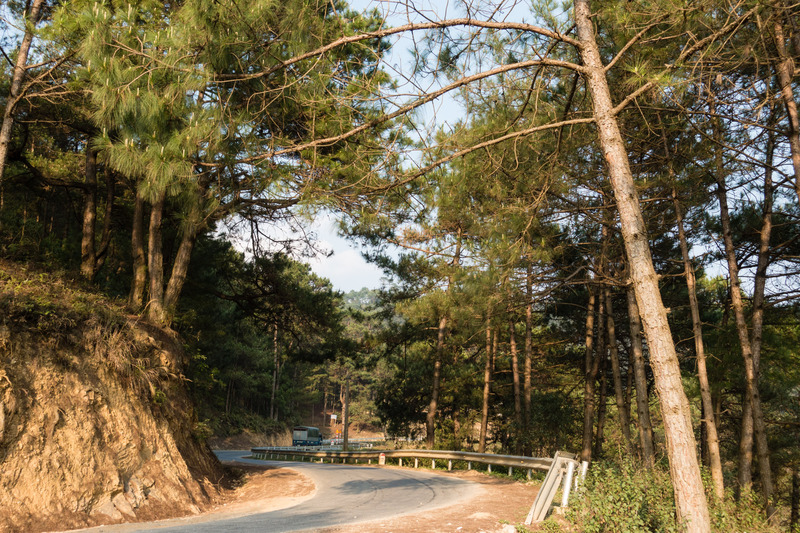
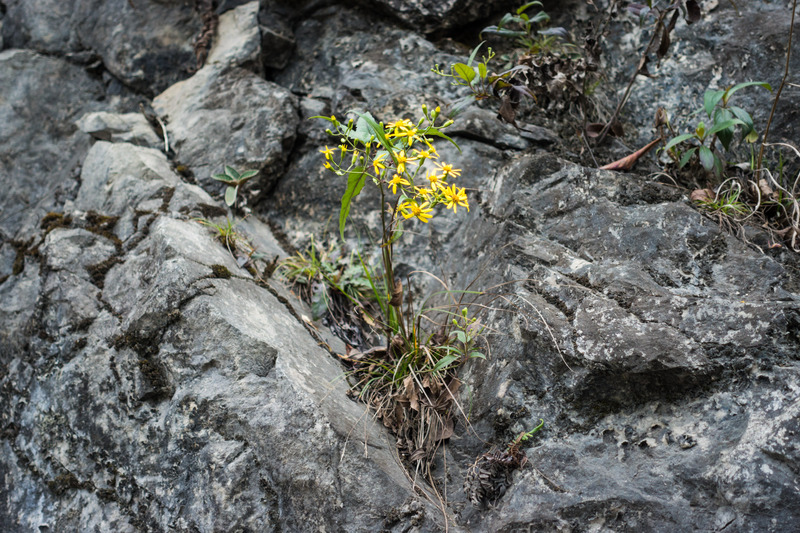
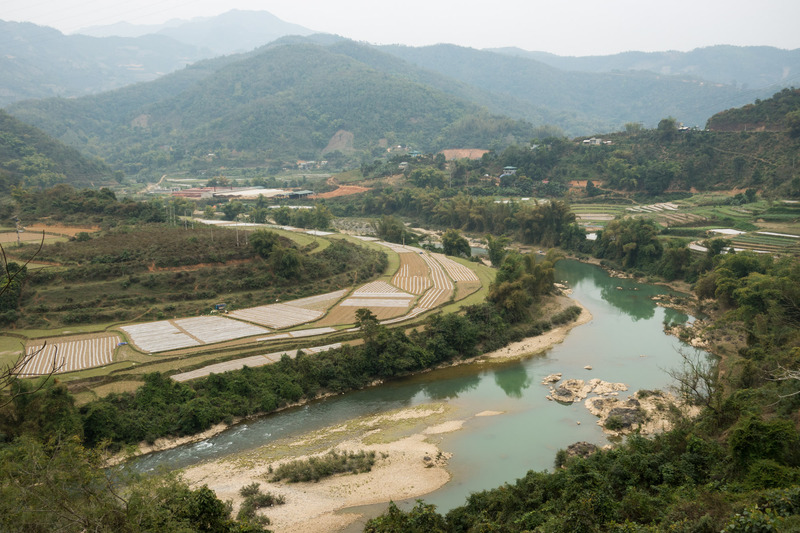
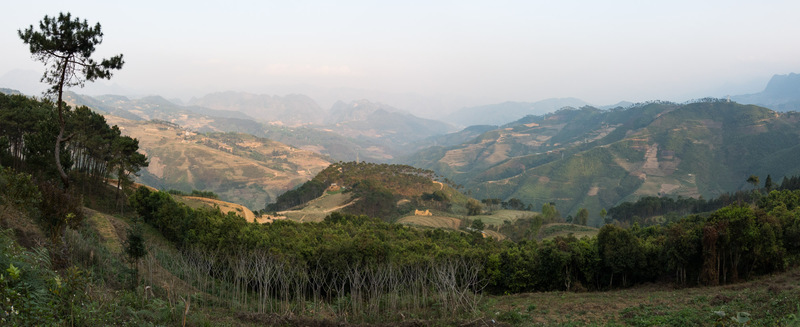
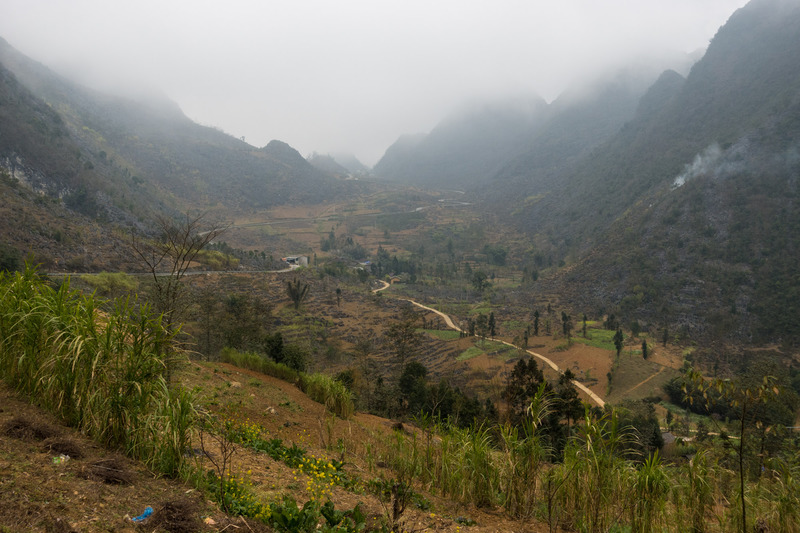
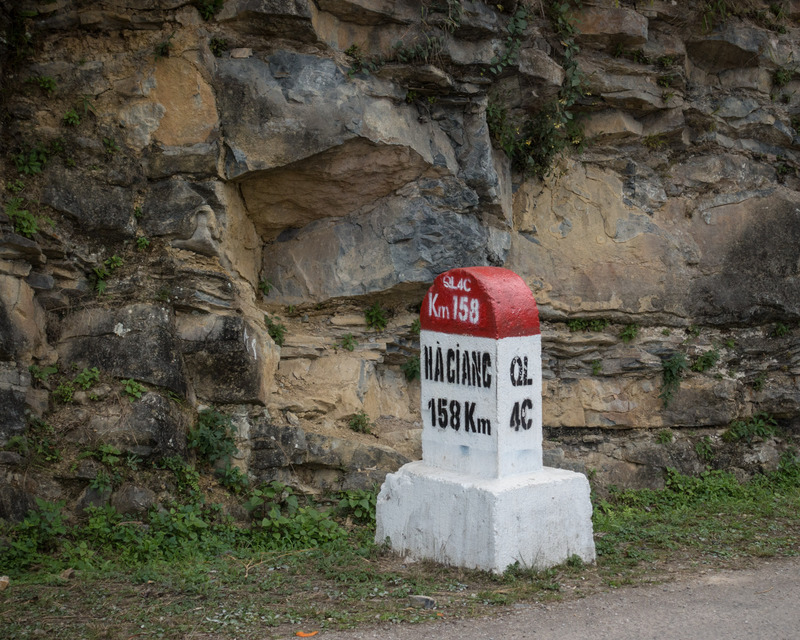
We explored Hà Giang Province over the course of five days (or six, depending on how you count):
- Day 1: Phố Ràng (Lào Cai Province) - Hà Giang (Hà Giang Province) (121 km)
- Day 2: Hà Giang - Yên Minh (95 km)
- Day 3: Yên Minh - Đống Văn (35 km)
- Day 4: Đống Văn - Lũng Cú - Đống Văn (51 km)
- Day 5: Đống Văn - Mèo Vạc (23 km)
- Day 6: Mèo Vạc - Bảo Lạc (Cao Bằng Province) (75 km)
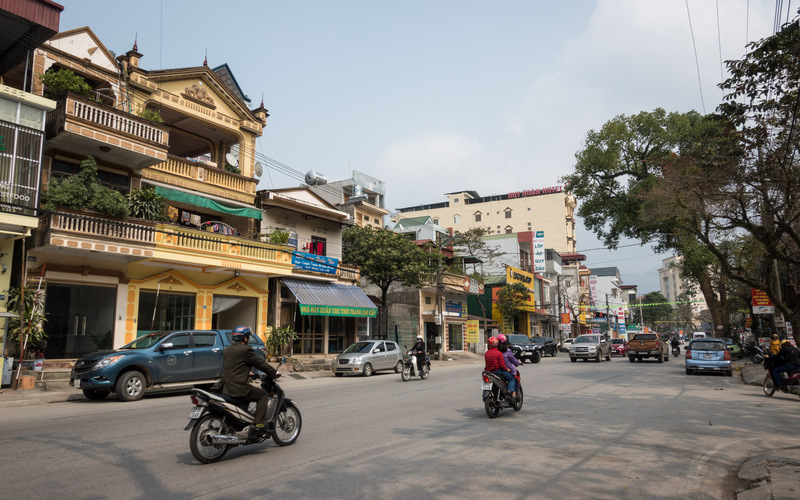
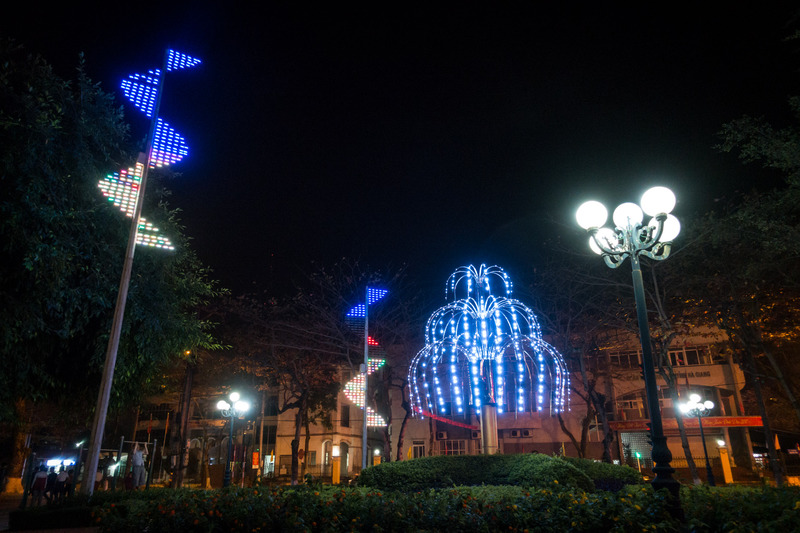
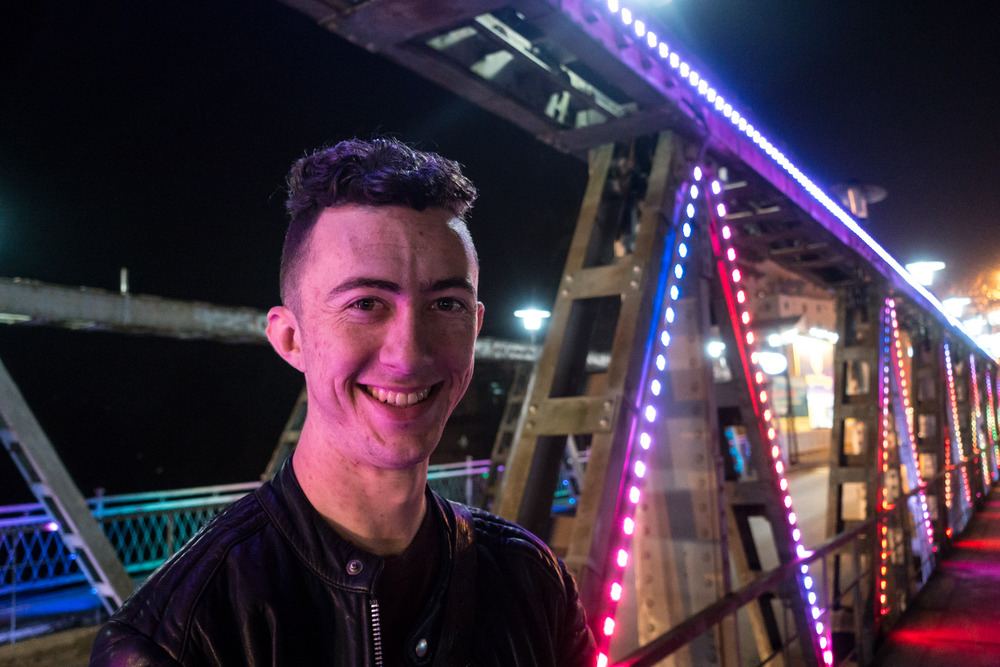
Đống Văn Karst Plateau
The Đống Văn Karst Plateau is a geopark area with fields of stunning craggy rocks and soaring limestone peaks that seem to appear out of nowhere. From various passes, we were able to look out and see range after range of peaks stretching as far as the eye could see. Parts of the geopark looked like Halong Bay with the water removed.
In Hà Giang, we purchased permits to visit the border area, as the Đống Văn Karst Plateau extends all the way to China. These permits were requested at all of our hotels/guesthouses, but we were never stopped and asked to produce them when we were on the road.
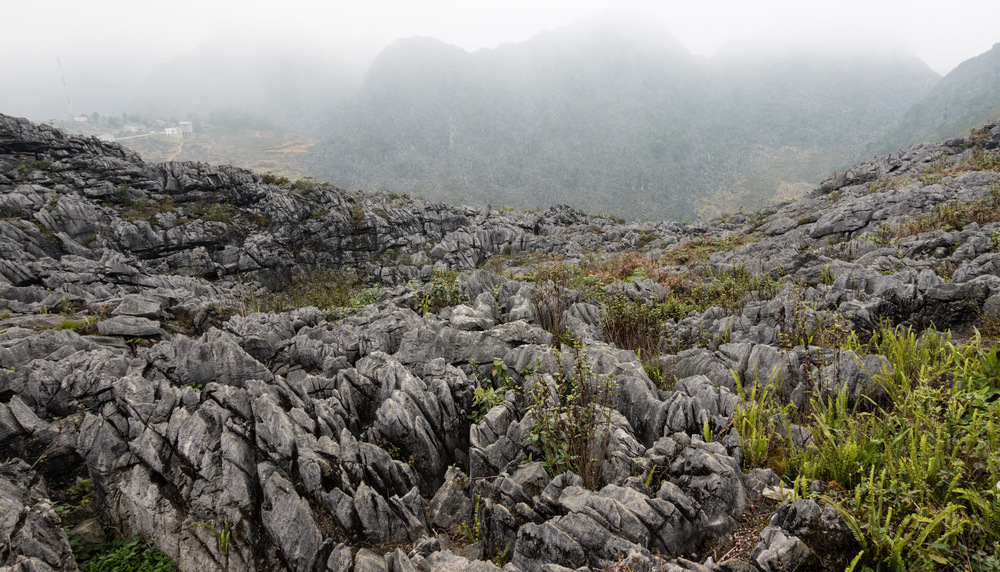
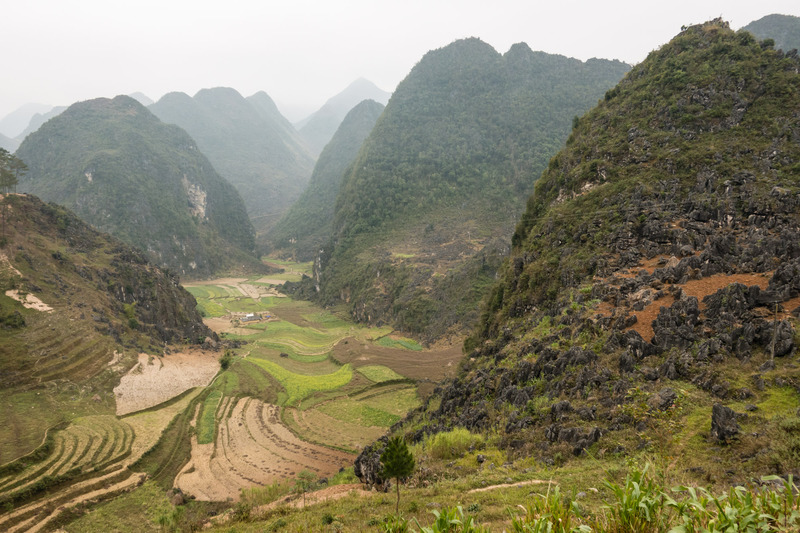
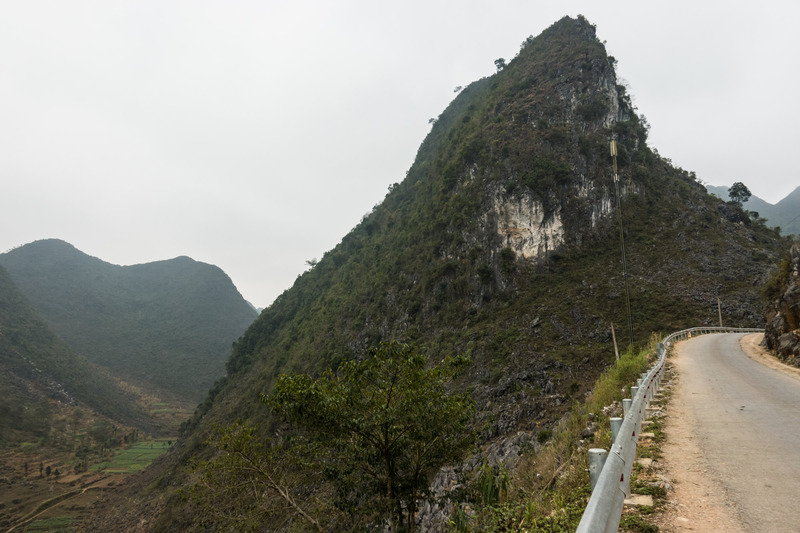
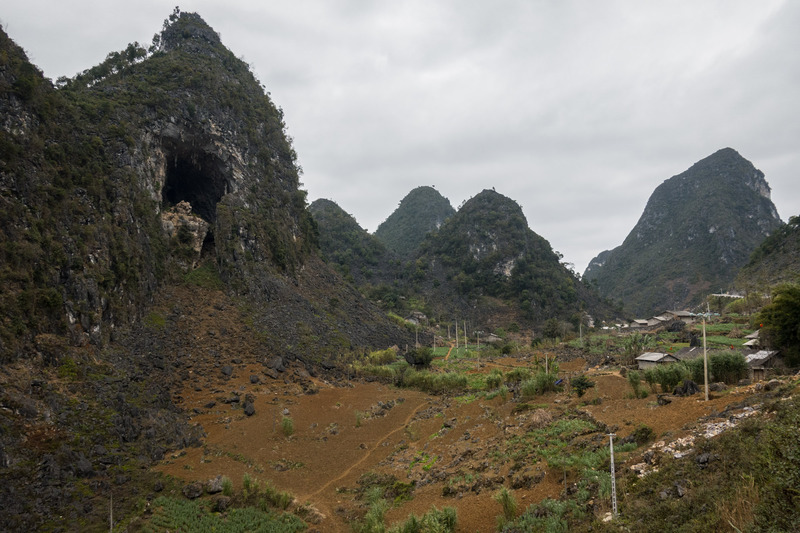
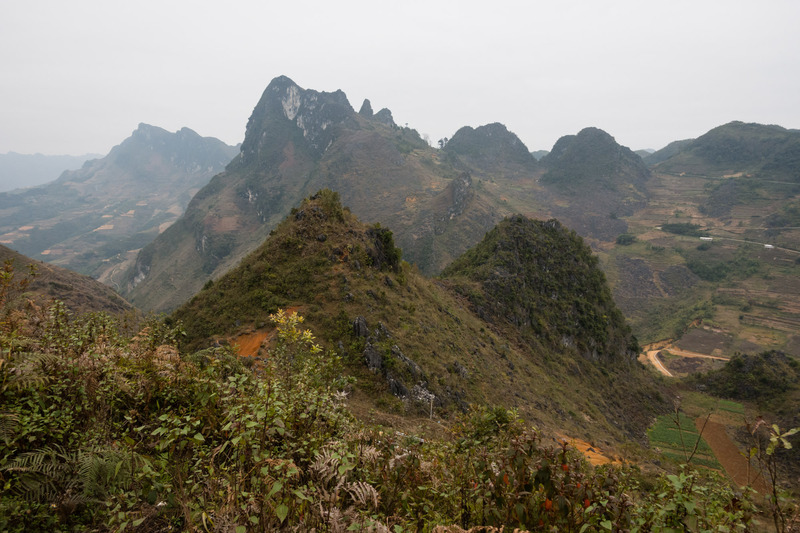
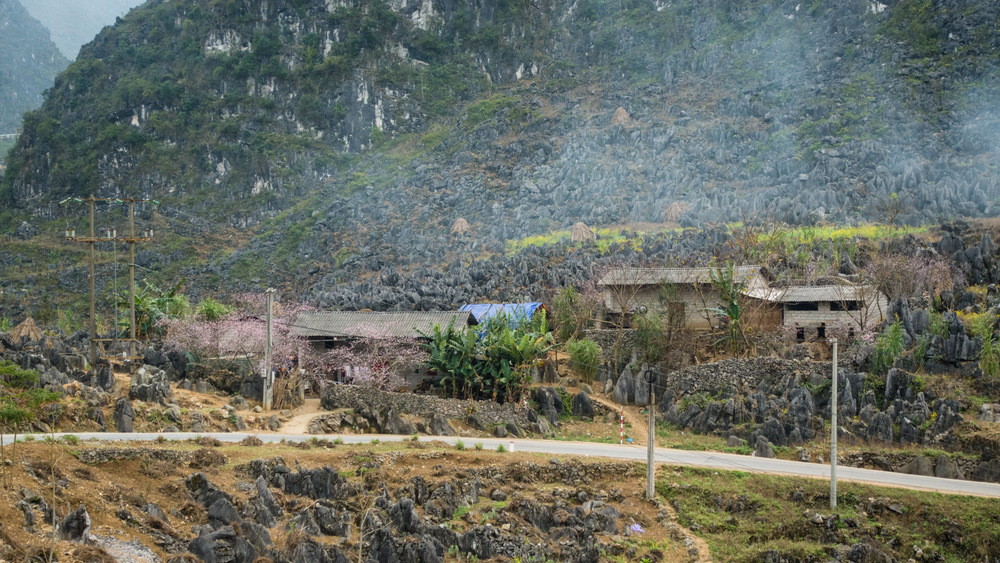
Tam Sơn
As we crested a hill, the beautiful valley containing the town of Tam Sơn appeared before us. We predictably stopped to take pictures, and also got to watch, just down the road, as two large trucks squeezed past each other. One truck stopped with its wheels right next to the open drainage ditch, and the other inched its way forwards, about half an inch away from scraping the guard rail; there was only an inch or two of clearance between the mirrors of the two trucks.
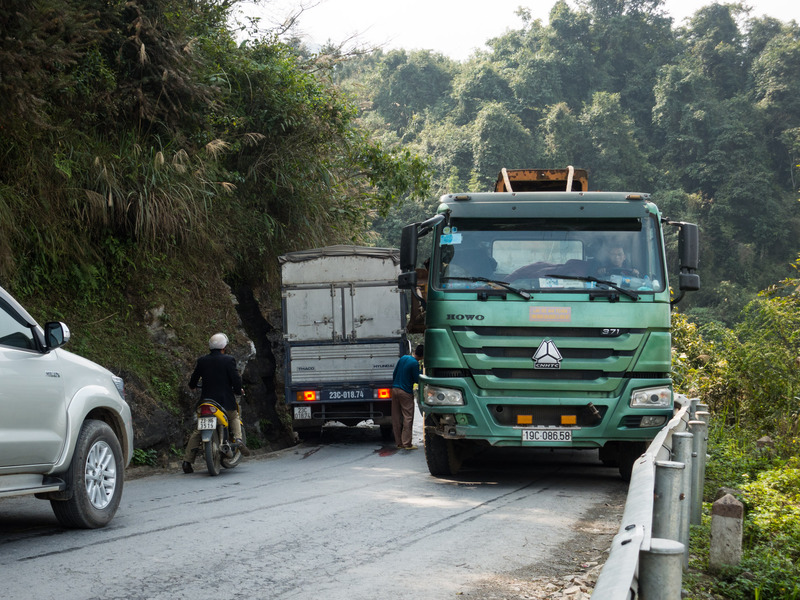
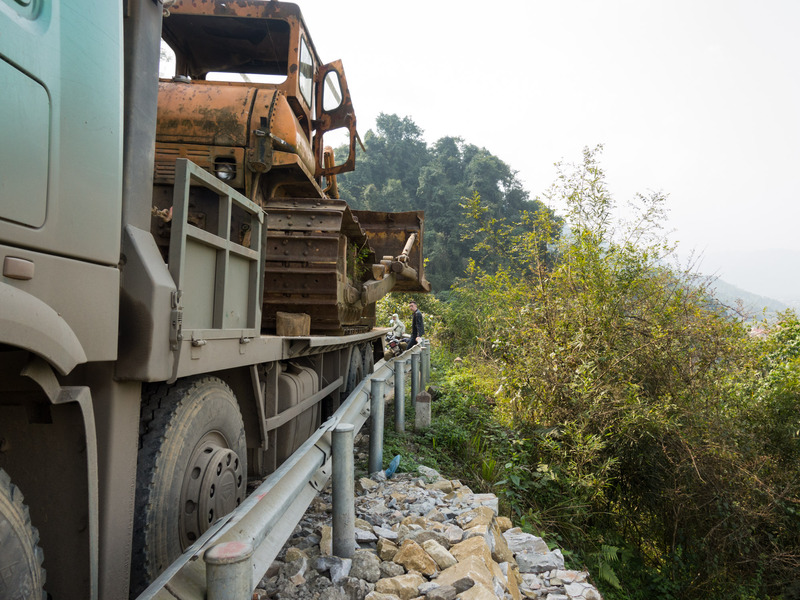
After the trucks successfully passed each other and the build-up of traffic in both directions dissipated, we continued on our way. Jake and I stopped in a small cafe in Tam Sơn, and I found many things to photograph.
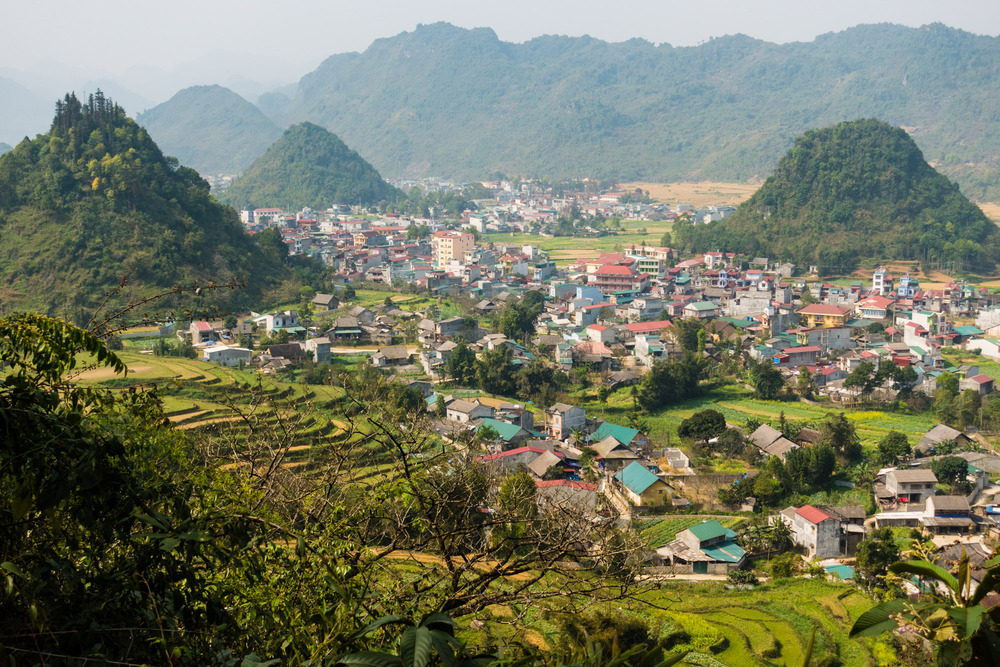
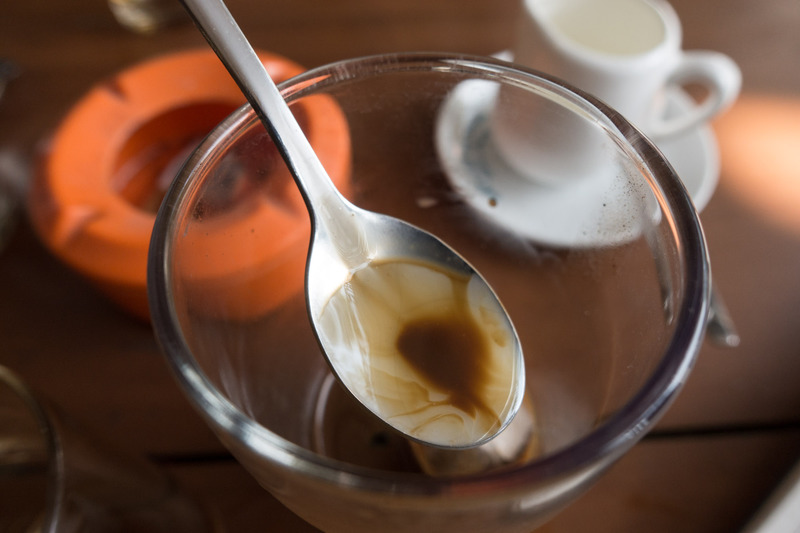
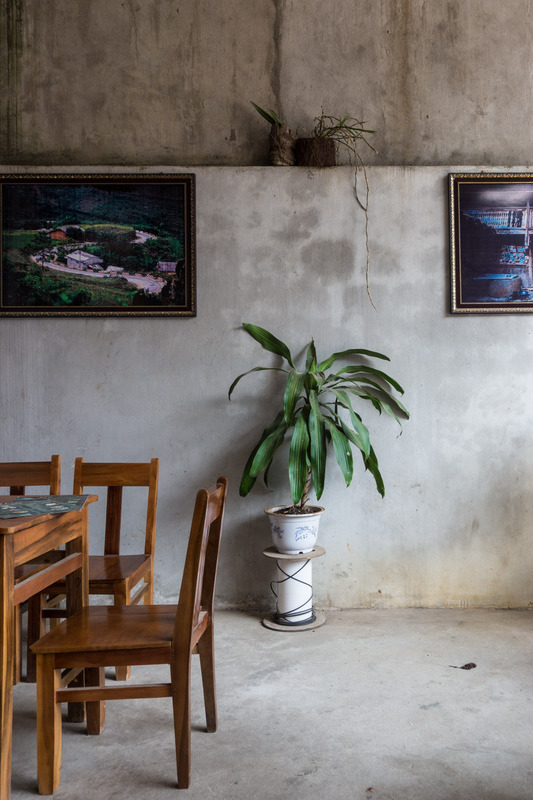
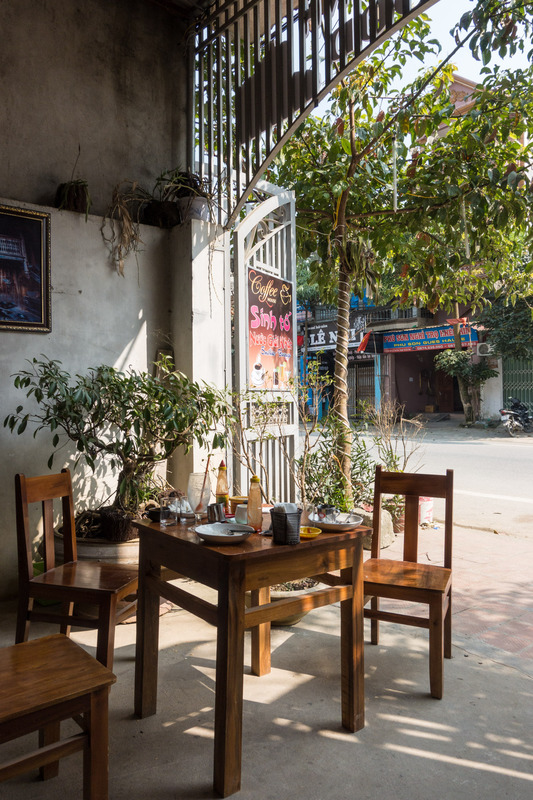
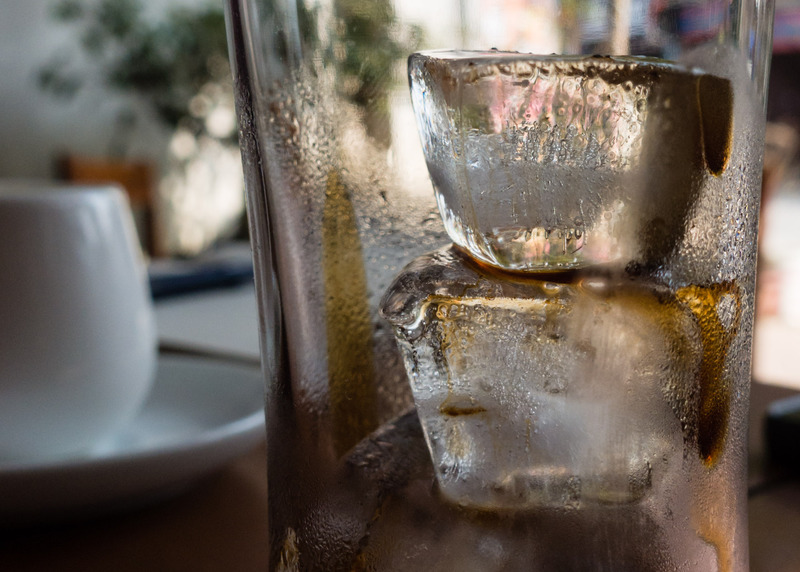
H’mong King’s Palace
The H’mong King’s Palace is a wooden structure in Sa Phìn. It sits on a small hill surrounded by other small buildings, and was immediately visible as we crested a nearby pass and descended into the valley.
Sources differ, but from what we could gather, a H’mong man in the start of the 1900’s was very powerful, in part due to the opium trade. Chinese tradesmen built this building, from which the H’mong man ruled the surrounding area.
The wooden palace is built in a Chinese architectural style and contains three courtyards. The wings of the building are all two stories tall, and contain an armory and two towers from which it could be defended.
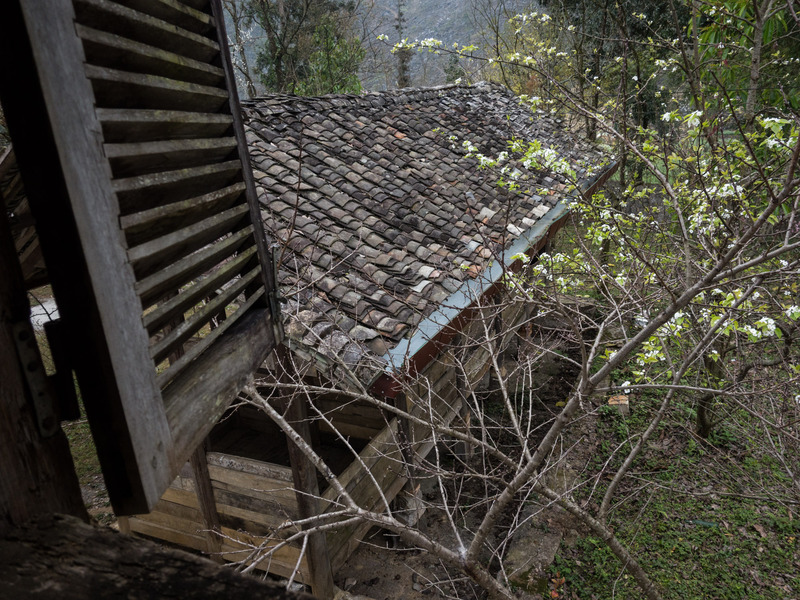
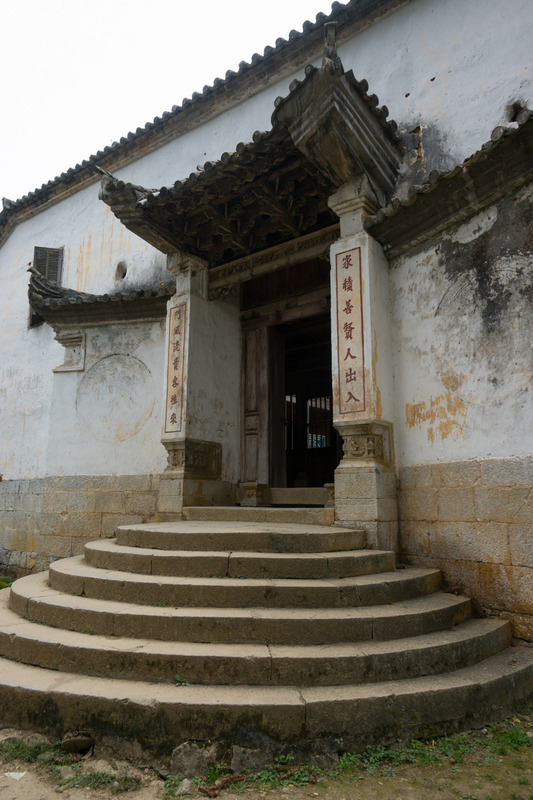
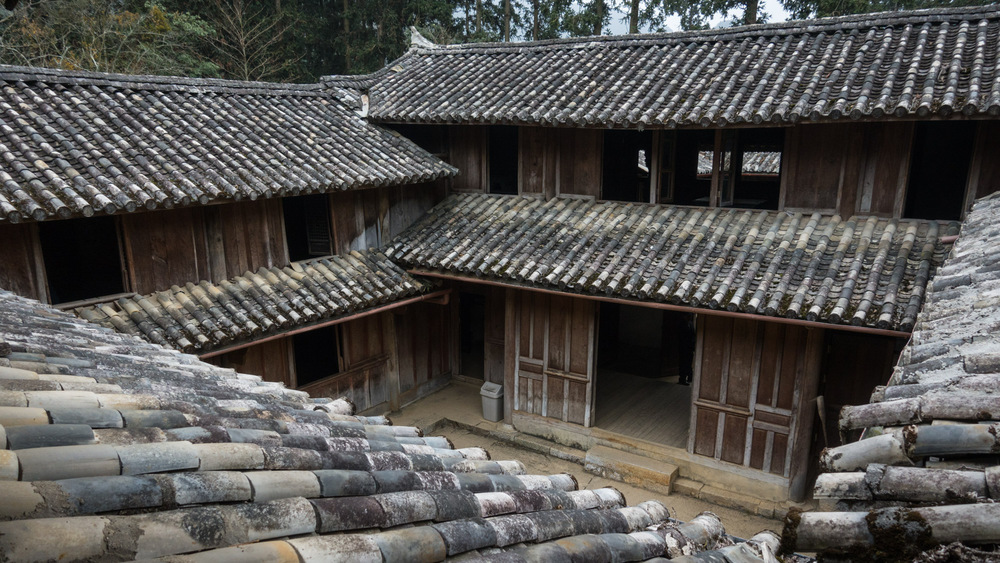
Đống Văn Fortress
Đống Văn Fortress sits on top of a huge rock and looks out over the entire valley. The fortress was constructed by French colonists to maintain military control of the area.
From the top of the somewhat derelict fortress, we were treated to fantastic views in every direction, including a birds eye view of the town of Đống Văn. We noted the pass down which we had entered and the valley through which we would exit. We also turned around and marveled at the sheer rocky slopes and the faint signs of terraced fields reaching all the way to the top.
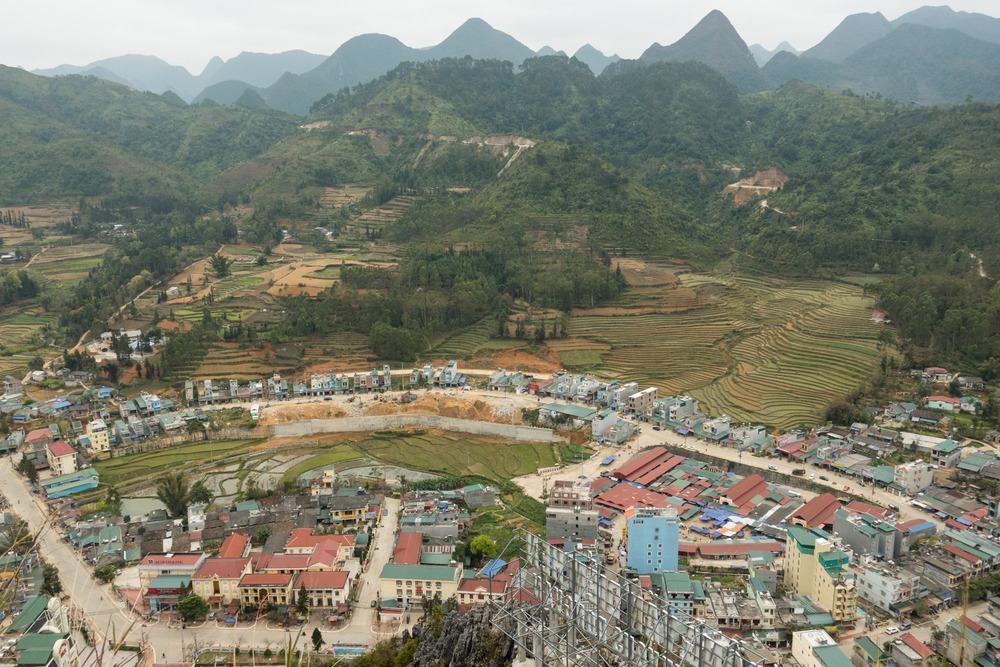
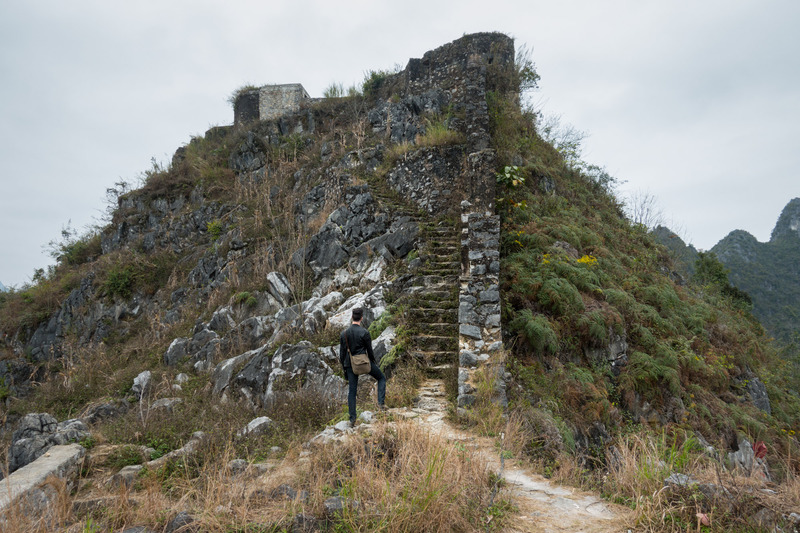
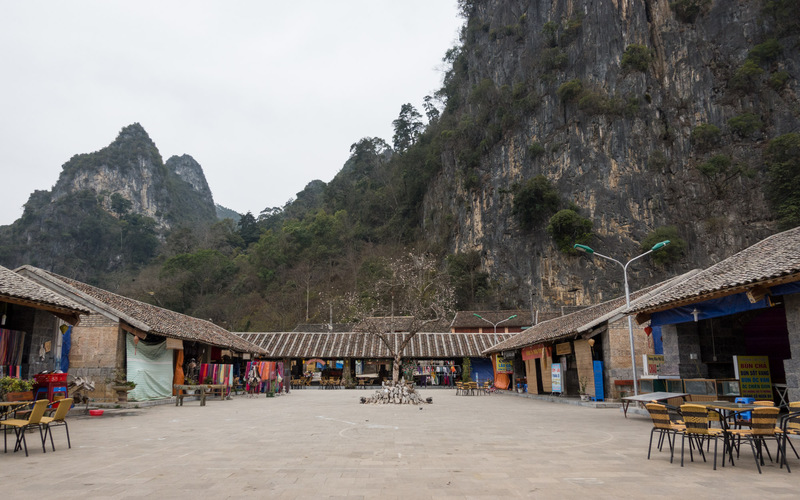
Lũng Cú
From Đồng Văn, we took a day trip north to Lũng Cú, commonly referred to as Vietnam’s North Pole. A huge flagpole sits on top of a hill at Vietnam’s northern-most point, and there are sprawling views on display from both the base and the top of the the flagpole. As is the case at Berlin’s Victory Column, visitors to Lũng Cú can climb a long spiral staircase to reach a viewing platform at the very top. We arrived at the top of the staircase as a group of Vietnamese tourists caught ahold of the flag and were taking pictures with the flag billowing behind them. This explained the strange movements of the flag when viewed from below.
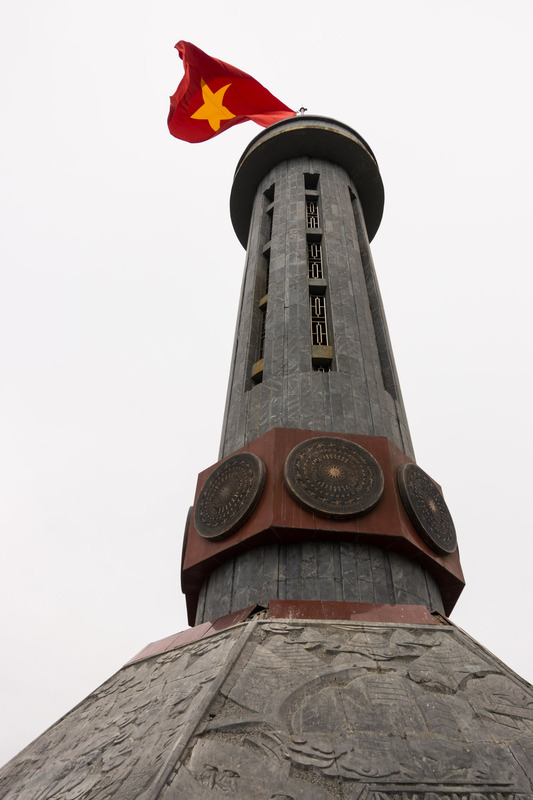
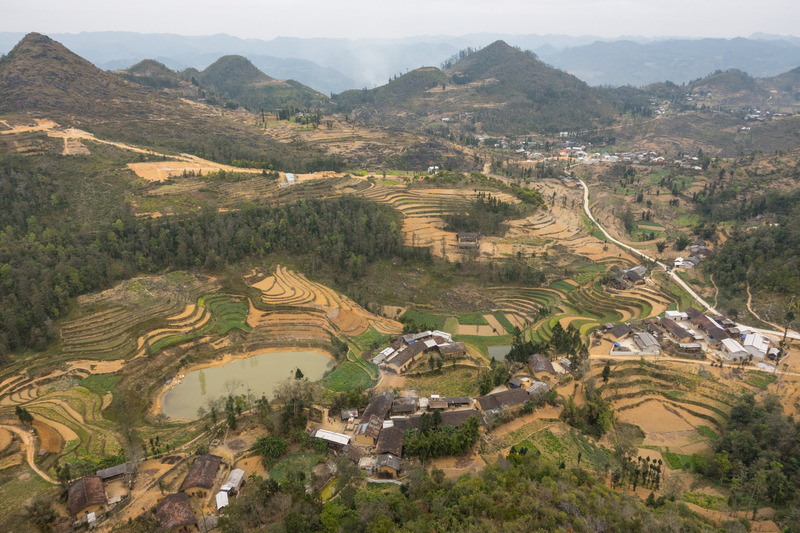
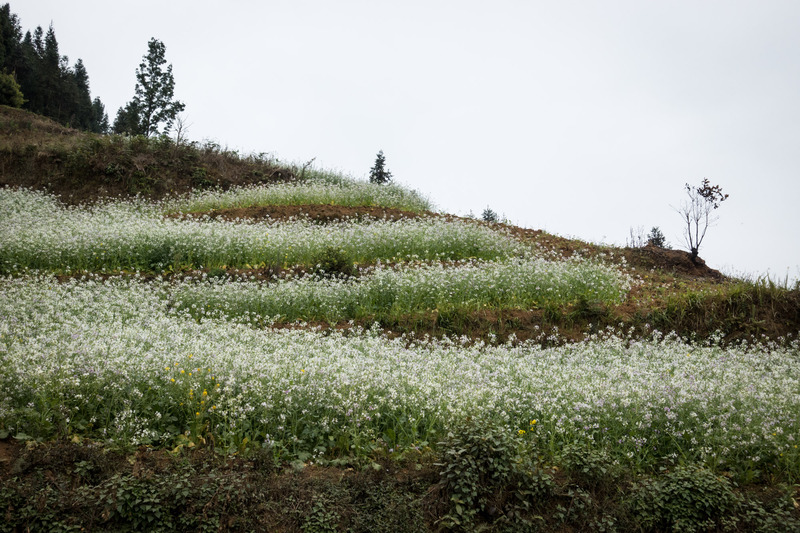
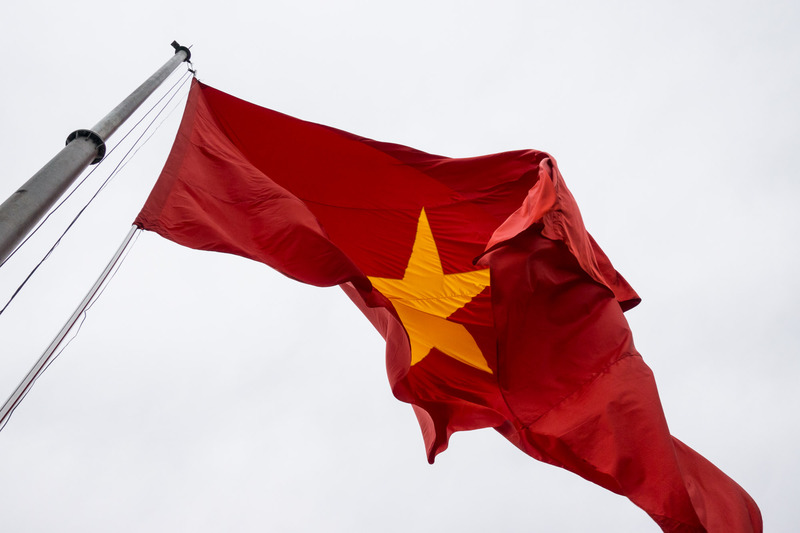
The road to Lũng Cú passes within a stone’s throw of the Chinese border. At one point, we got off the bike and peered over the border (an imaginary line in the gap between two hills) and into the rural backroads of China. It didn’t look much different: the one narrow road we could see looked like the roads we’d been driving on, although two motorbikes I saw drive past looked somehow different… larger? than the ones we’ve seen in Vietnam. We’ve read that some of the minority groups living near the border disregard it completely and freely move from one side to the other. The well-worn motorcycle track where we stopped was testament to this.
We passed two smuggling operations further down the road. Both were at the same spot in the border fence (there was actually a wire fence at this point, since a dirt road wide enough for a car led to the border). The group we saw on our way to the border was different than the group we saw on our way back, but both groups had a car or truck on one side of the fence and a bunch of motorcycles on the other. Goods were being passed through the fence. We decided it wasn’t wise to stop, and kept driving.
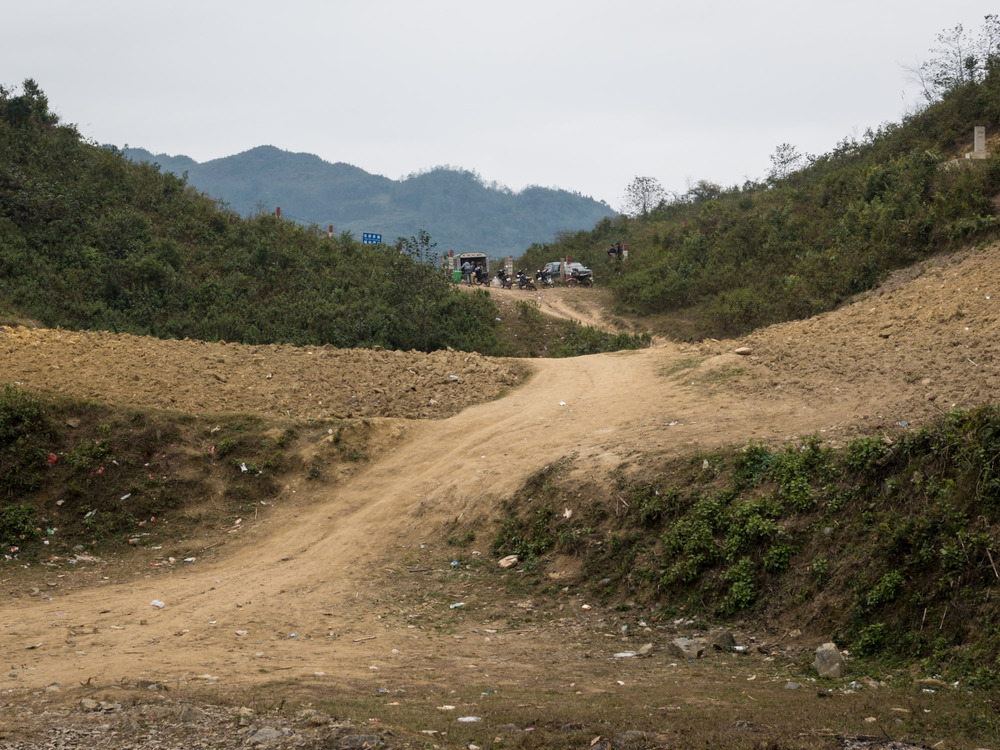
Ma Pì Lèng
We drove through the pass of Ma Pì Lèng as we made our way from Đồng Văn to Mèo Vạc. A structure sits on the edge of the pass; we stopped here to take pictures and to warm our hands over cups of cà phê sữa nóng (hot Vietnamese drip coffee served with condensed milk). The landscape dwarfed the clusters of buildings and some small villages that peppered the sleep slopes; from our vantage point, the houses looked like tiny toy models.
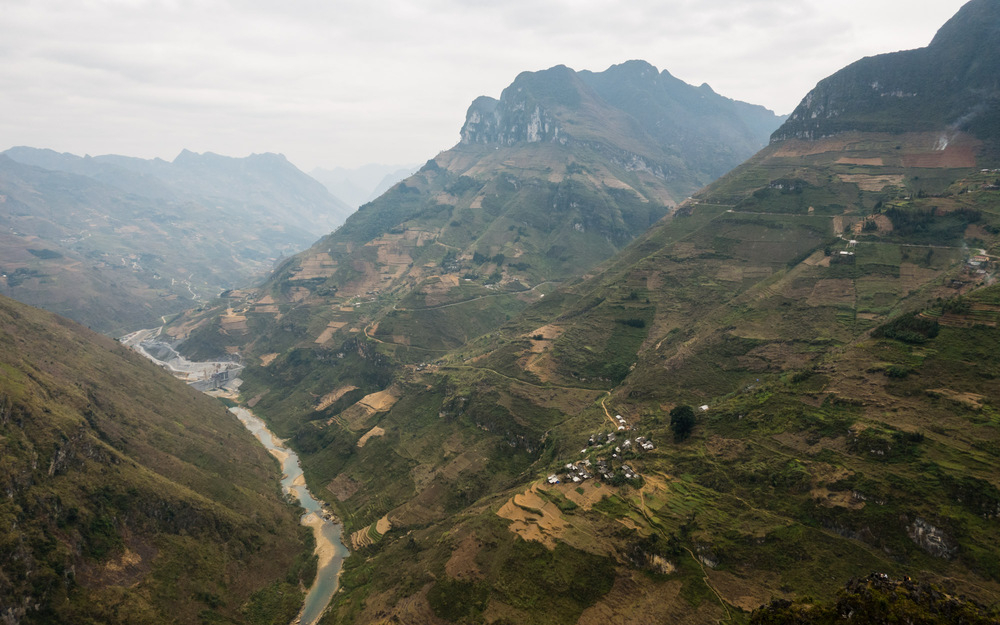
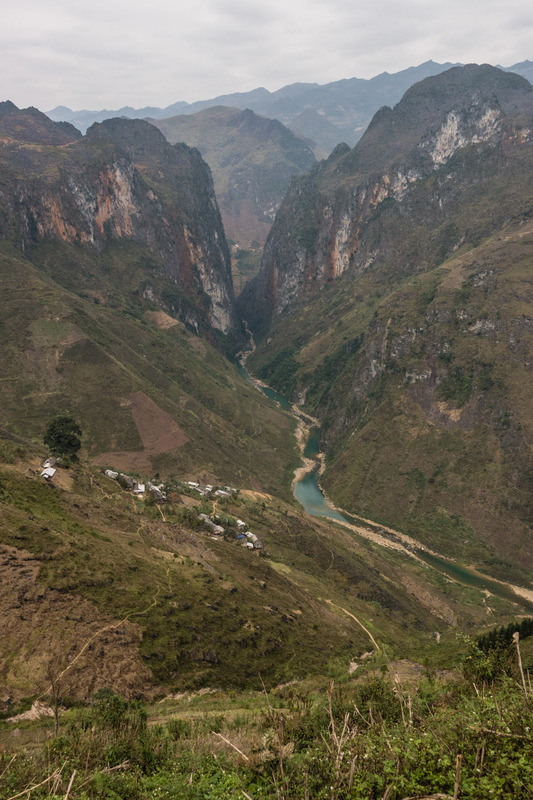
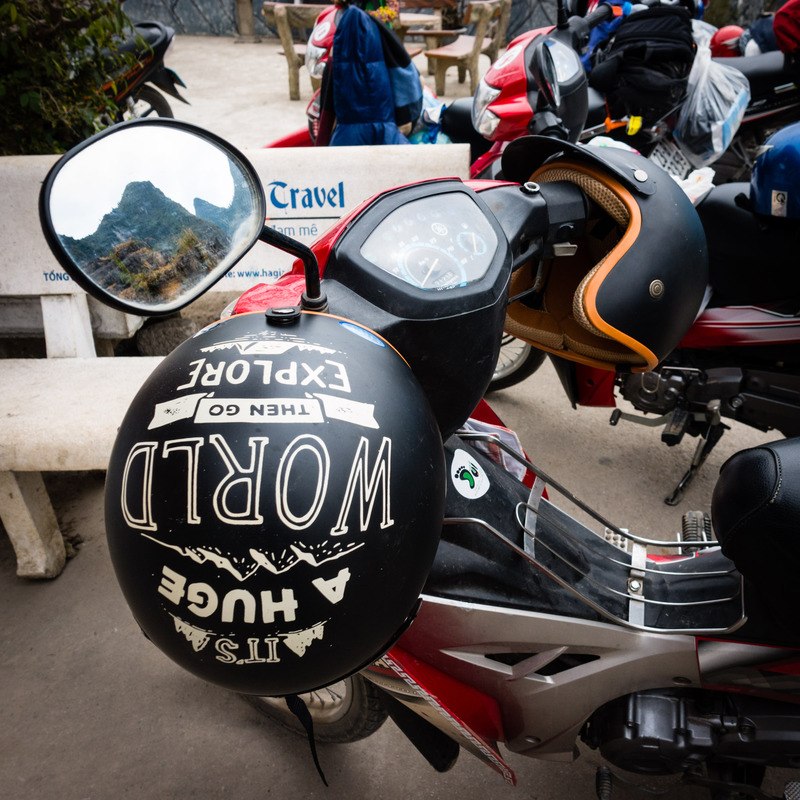
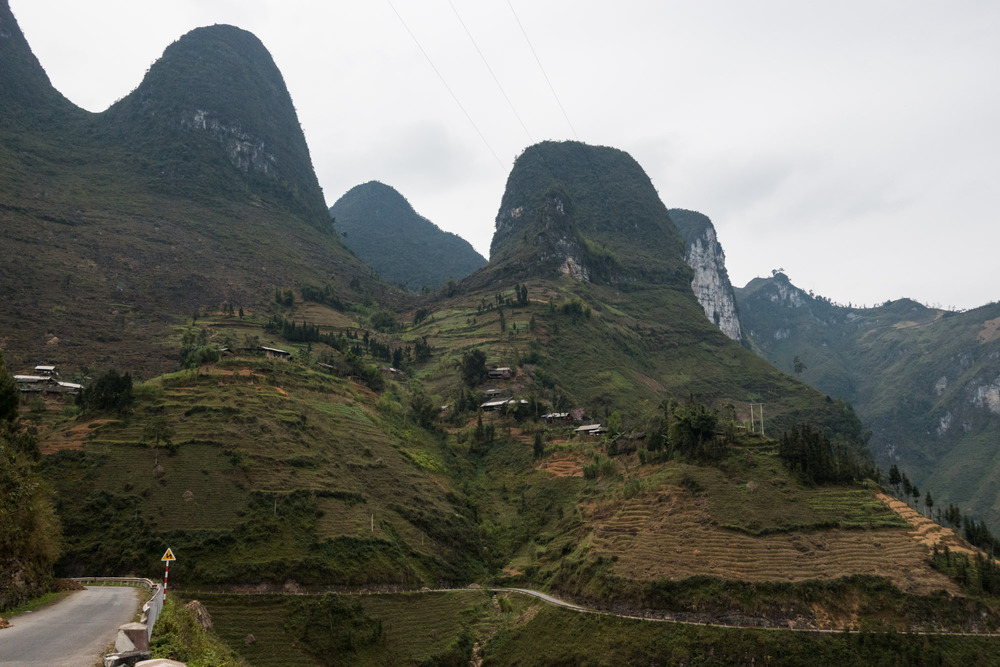
Mèo Vạc Weekend Market
The Mèo Vạc market building covers an entire city block, but the weekend market extends further into the adjacent streets. Because the main block is on a slight incline, the building is divided into three non-overlapping sections, each separated by a short staircase.
The bottom floor was covered in restaurants, clothes, and other dry goods. The tables and benches for each restaurant setup were arranged near communal cooking areas. The cooking areas consisted of elevated concrete pits on top of which big pots of broth were heating.
The middle floor consisted of butchers. Each seller had fresh cuts of meat arranged on tile countertops, sometimes with an animal’s head displayed to advertise the type of meat for sale. We also watched a whole pig carcass pass by in a wheelbarrow, presumably on its way to be butchered.
The top floor contained a mesh-mosh of different sellers, including fresh fruits and vegetables, clothes, and more dry goods. One friendly woman saw us admiring the fresh produce and convinced us to each try the small oblong green fruit that she was nibbling on. She also offered us some of the seasoning that she was sprinkling on hers. The fruit was bitter and sour and had a bit of a numbing effect on our lips (and Jake’s gums).
The adjacent streets were filled with a wide array of goods ranging from fresh produce (notably oranges, sugarcane, and root vegetables), to pots and pans, to scythes and other blades, to television satellite dishes. And a couple of blocks over, we found the large lot for livestock sales.
People travelled from miles away to buy and sell goods, and we passed some of them walking home as we drove out of town. Many individuals were dressed in the clothes of different minority groups, and everywhere was a riot of color. We saw sequins (covering entire garments), headscarves of all colors, multicolored skirts, embroidered blouses, and the list goes on.
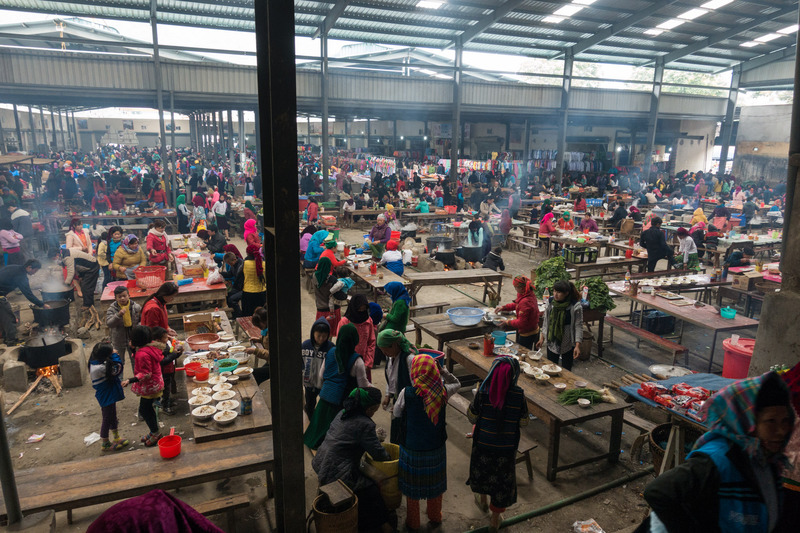
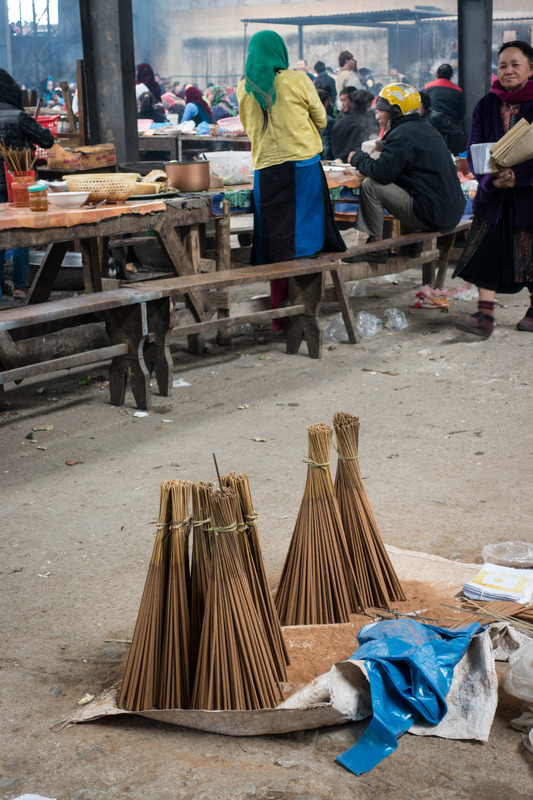
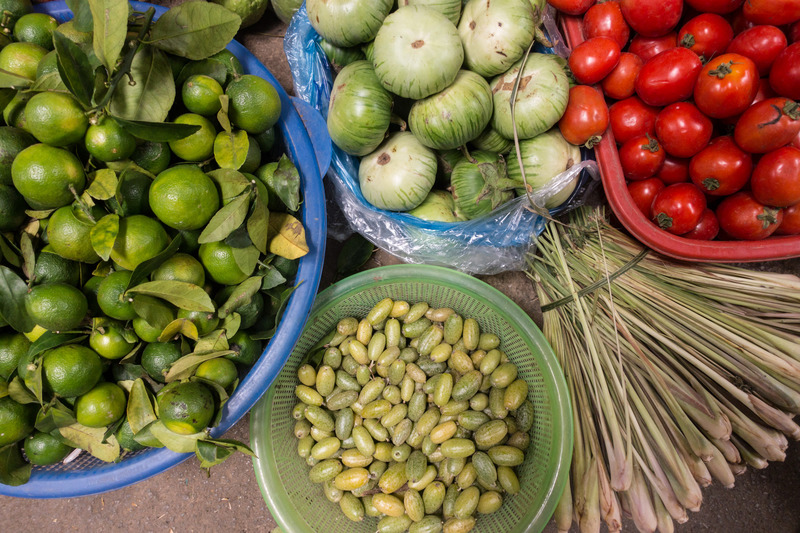
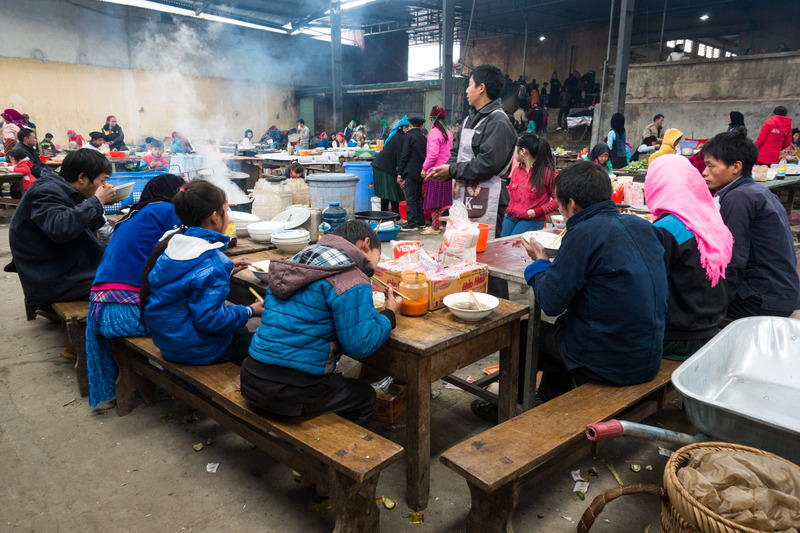
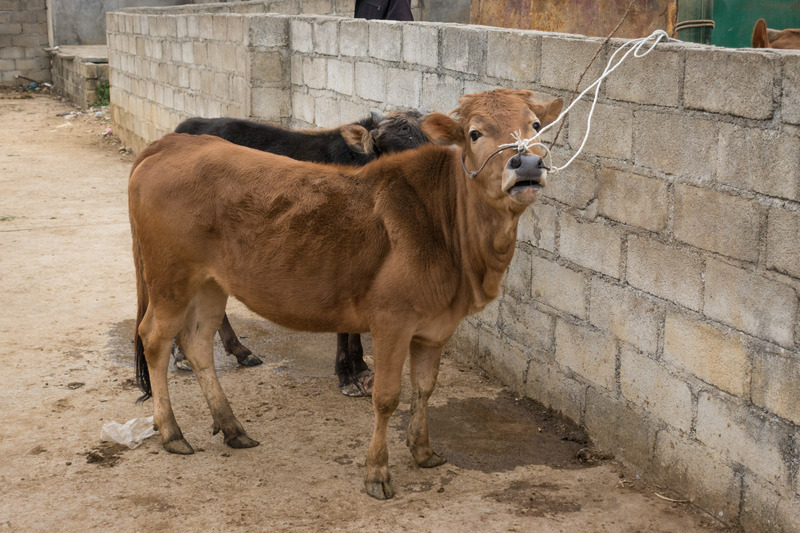
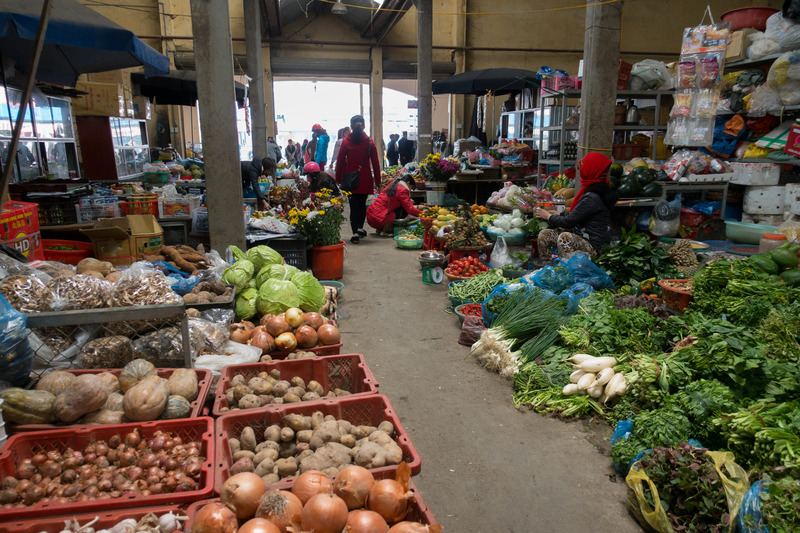
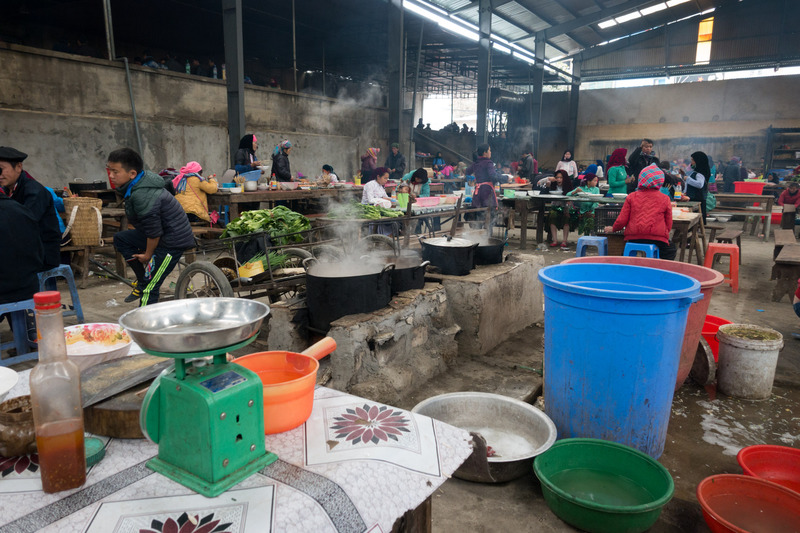
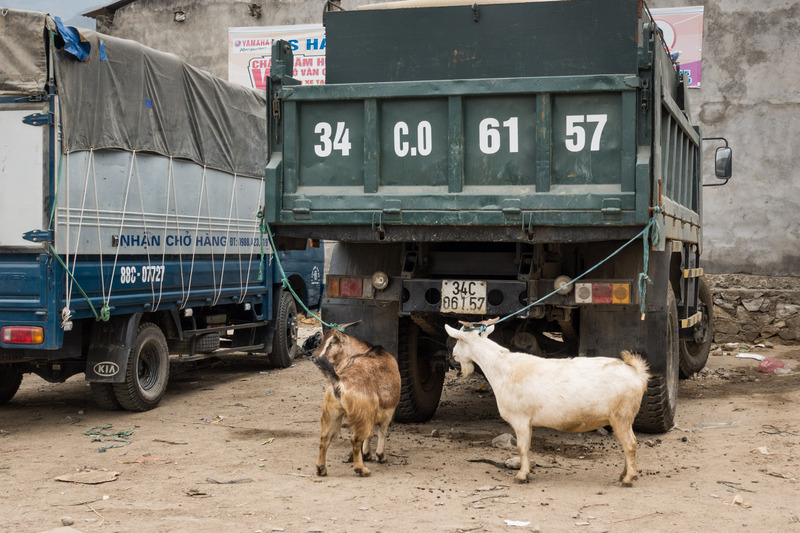
Roadside Interactions
When we stopped to take pictures on the drive from Mèo Vạc to Bảo Lạc, the silence was interrupted by a clear voice shouting “Hello!” Jake and I looked around, but the road was deserted. When the call was repeated, we looked down into the valley far far below, and saw two boys sitting in a field (each only a couple pixels tall in the below image). The ensuing conversation went a bit as follows:
Them: “Hello!”
Us: “Hello!”
Them: “What’s your name?”
Jake: “Jake!”
Them: “Where you from?”
Us: “America!”
giggling and further unintelligible shouted things
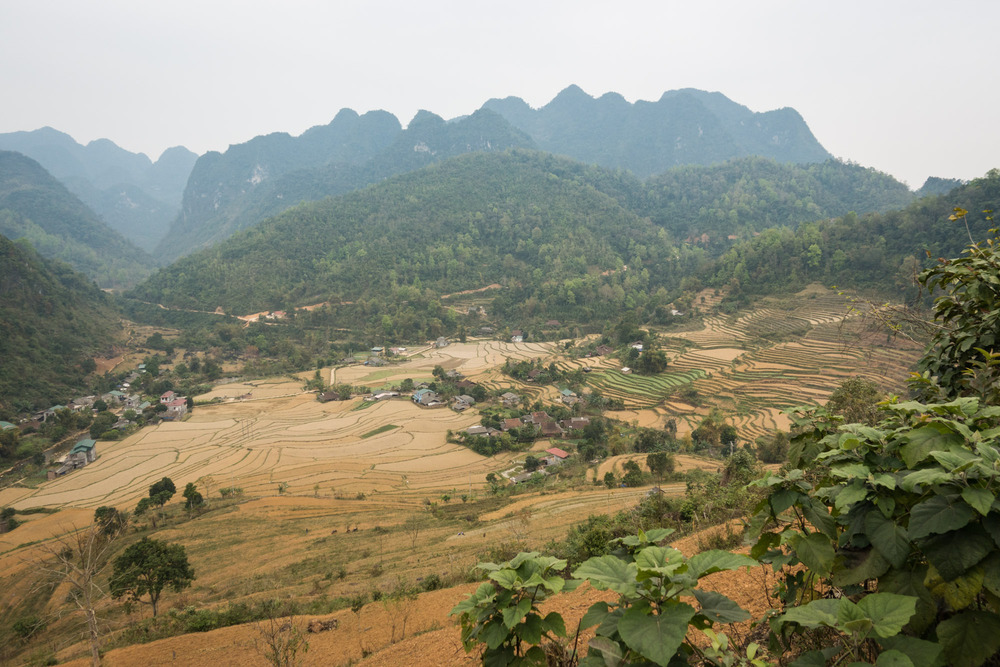
Later on during another photo stop, some inquisitive cows crossed the road to say hello and to inspect the bike. The bike must have passed inspection, because we were able to shoo them away and continue on our ride.
